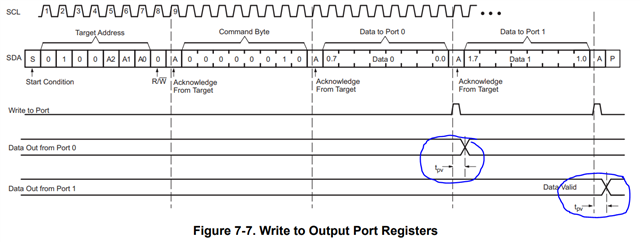Hi team,
The customer is evaluating the TCA9535. Here is how they use: They use TCA9535 to simulate six channel pwm at 1KHz to drive 2 RGB leds.
Could you please confirm that:
Q1 When simulating 1KHz pwm output, how fast does TCA9535 change the Low to High with I2C clock at 100KHz and 400KHz respectively?
Q2 As mentioned before, they need six channels to drive leds.Customers can invert one I/O via I2C and they want to know how long it takes to invert all 6 I/O with I2C.
YOURS
NAN



